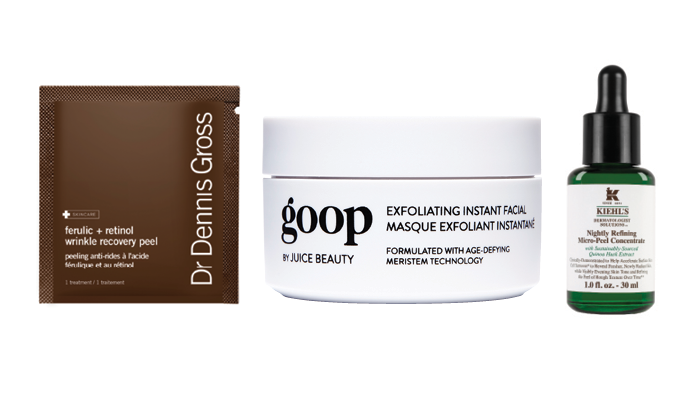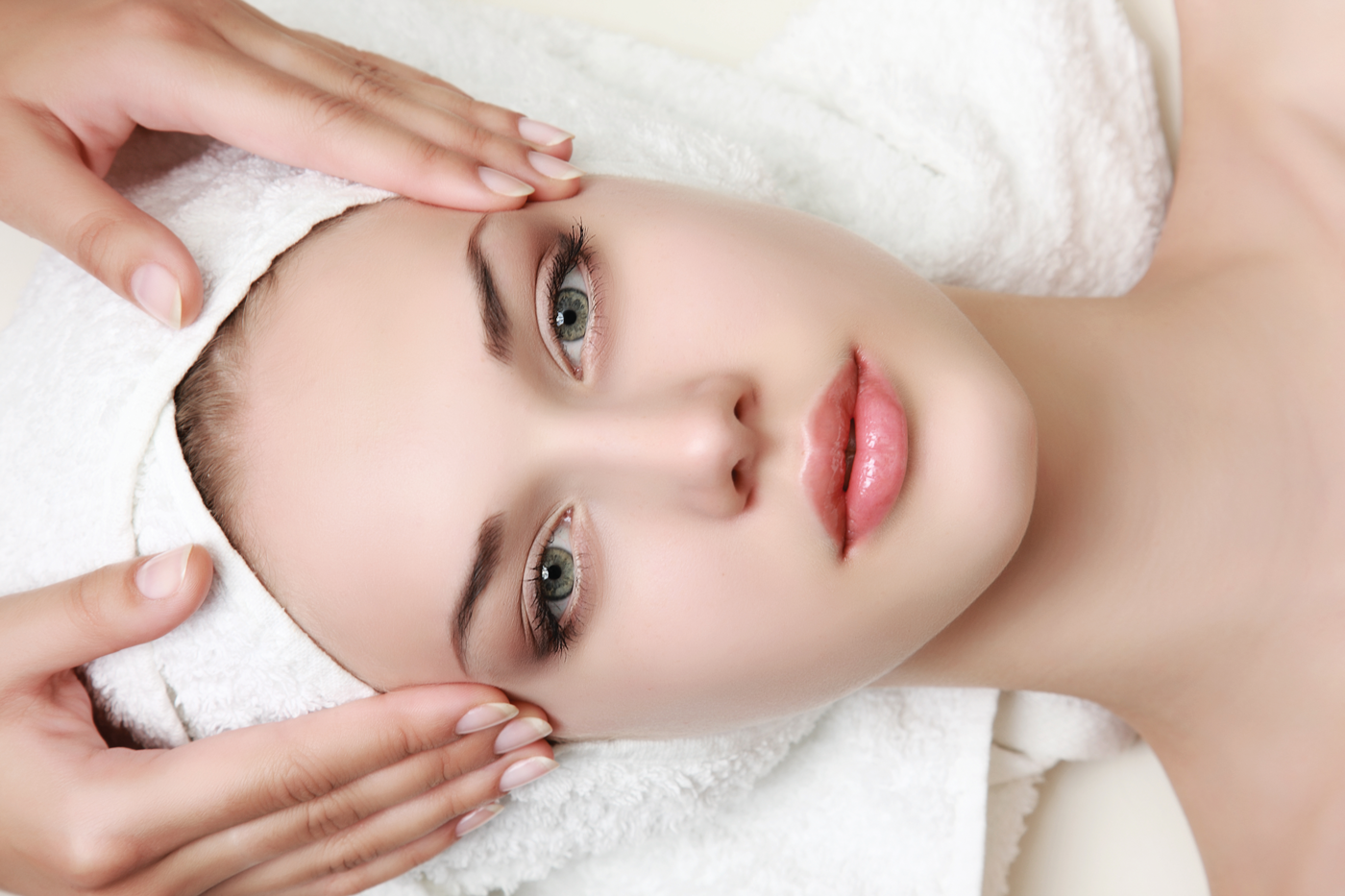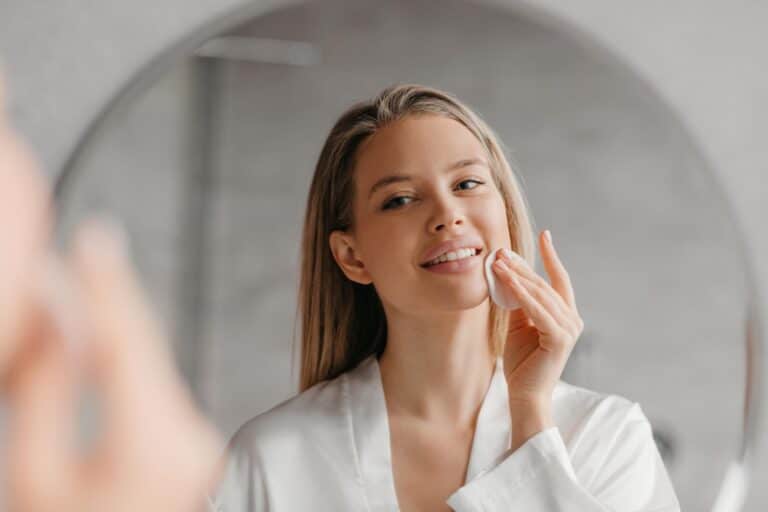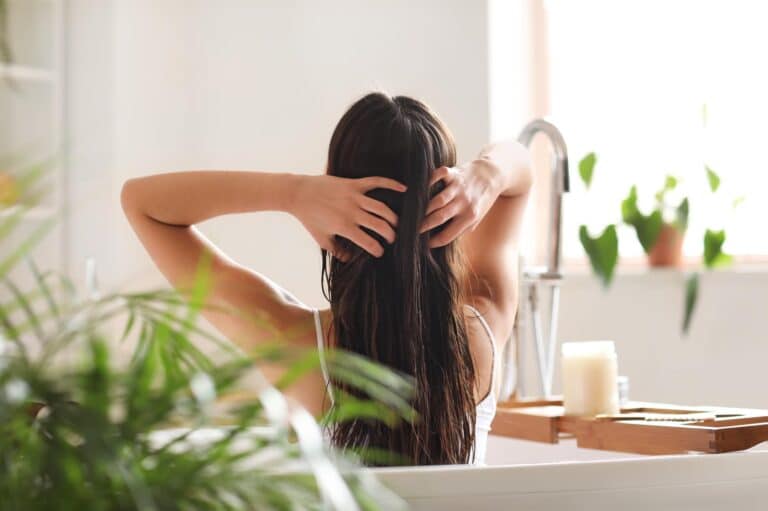Chemical peels often get a bad rap—the name alone is enough to scare away anyone with sensitive skin. But the next-generation peels are markedly different from the super potent versions of five to ten years ago. “Now peels are formulated with a blend of acids at lower percentages, which makes them more effective but less irritating,” says Ellen Tartaglione, a medical aesthetician at The Greenwich Medical Skincare and Laser Spa in Greenwich, CT. These mild mixtures carefully exfoliate your skin to leave it softer and smoother, and can be tailored to your exact needs. “We’ve seen an explosion in professional peels that contain a spectrum of ingredients to target specific concerns,” says Adam Geyer, M.D., a New York City dermatologist and consultant for Kiehl’s. There’s practically a peel for every issue, including acne, fine lines, dullness and dark spots. “We can add retinoic acid, lighteners, antioxidants, and anti-aging ingredients to customize your peel,” explains dermatologist Rhonda Klein, M.D., of Connecticut Dermatology Group in Milford, Norwalk, and Stamford, CT. There’s also less downtime, a bonus if you’d rather not use your vacation days just to get a peel. So which option is right for you? Follow this expert advice:
Calm and Clear Up Sensitive Skin
The sloughing effect of today’s reformulated peels can help improve everything from breakouts to rosacea to eczema. “Most people don’t realize that peels are very beneficial for sensitive skin since they encourage your body to replace damaged skin cells with healthy new ones,” says Tartaglione, who specializes in acne and calls peels like the Vitalize or Rejuvenize (from $200) at her practice “the gold standard” for de-clogging pores. Dr. Klein likes options spiked with salicylic acid or beta hydroxy acid, along with green tea, encapsulated retinol and fruit extracts to “promote healthy cellular turnover.” To offset any flaking, she notes that “emollients, such as hyaluronic acid and ceramides, can be mixed into the solution as well.”
Brighten and Even Out Your Tone
To zero in on dullness, dark spots, bumpy texture and generally “tired-looking skin,” NYC dermatologist Neal Schultz, M.D. is a fan of high-tech glycolic peels. “I changed the actual chemistry of my glycolic acid solution by raising the p.H., which makes my peels gentler, but I also increased the strength of the mixture.” The result? An easy-to-tolerate but highly effective remedy. “Your skin is just softer, brighter and glowing after a two-minute treatment,” notes Dr. Schultz. Patients can book a session at his Manhattan practice for $225 or with one of his trained estheticians for $50 at his BeautyRx peel bars—including one located in Butterfly Studio Salon in NYC.
Fend Off Lines and Wrinkles
For those with more advanced photo-aging (think: sun spots, wrinkles, loss of firmness, enlarged pores), Dr. Geyer likes multi-tasking solutions. “The newer combination peels contain a mixture of different acids, hydroquinone, vitamin C and retinol,” he says. These are often known as VIPeels and typically require four to six sessions (prices start at $300). If you don’t notice enough of an improvement? You might think beyond peels, and consider micro-needling with platelet rich plasma, says dermatologist Micheline Giovani, M.D., of Advanced Laser and Medical Spa in Rye, NY. This fix costs around $900 per treatment and “resurfaces the skin with needle punctures to stimulate new collagen and elastin production,” she explains.
Maintain the Benefits
Most experts recommend getting peels every four to six weeks. “They can also be complemented with at-home retinols, acids and antioxidants, that exfoliate and promote rejunvenation in between visits,” explains Dr. Klein (see At-Home Peels, above). As a bonus, your regular skincare creams and serums will absorb deeper post-peel. “The active ingredients will penetrate better since there’s fewer dead cells in the way,” says Tartaglione.
What to Do Before & After Your Chemical Peel
To Prep Your Skin:
“Think gentle, gentle, gentle the week leading up to a peel,” says Tartaglione, who advises going off all exfoliating products, including those with retinoid, alpha-hydroxy and beta-hydroxy acids. In some cases, acne products can be used up until the day of treatment, if the peel is specifically formulated for that purpose, says Tartaglione. You’ll also want to skip waxing a few days before a session.
To Speed Healing:
“Your recovery depends on the type of peel, but some redness and dryness is not uncommon,” says Dr. Geyer. Tartaglione adds that “the skin generally doesn’t start ‘peeling’ until after 48 hours, and should only last a few days.” She describes the effect as “a light, fluffy, controlled sloughing, almost like a flaking,” she says. (For anything more serious, contact your dermatologist.) As a follow-up, Dr. Klein likes moisturizers with “thick emollients, such as Cetaphil, Aquaphor or Cicalfate.” But the most essential move: “Aggressive sunscreen application,” says Dr. Klein, which should be done year-round, but especially post-peel in the summer.
At-Home Peels
Want an over-the-counter solution? Try a resurfacing peel or mask that you can apply yourself. Just remember to check in with your dermatologist before adding these to your routine.
 Dr. Dennis Gross Skincare Ferulic + Retinol Wrinkle Recovery Peel
Dr. Dennis Gross Skincare Ferulic + Retinol Wrinkle Recovery Peel
$88 for 16 treatments, drdennisgross.com
Goop Exfoliating Instant Facial mask
$125, goop.com
Kiehl’s Dermatologist Solutions Nightly Refining Micro-Peel Concentrate
$54, kiehls.com




